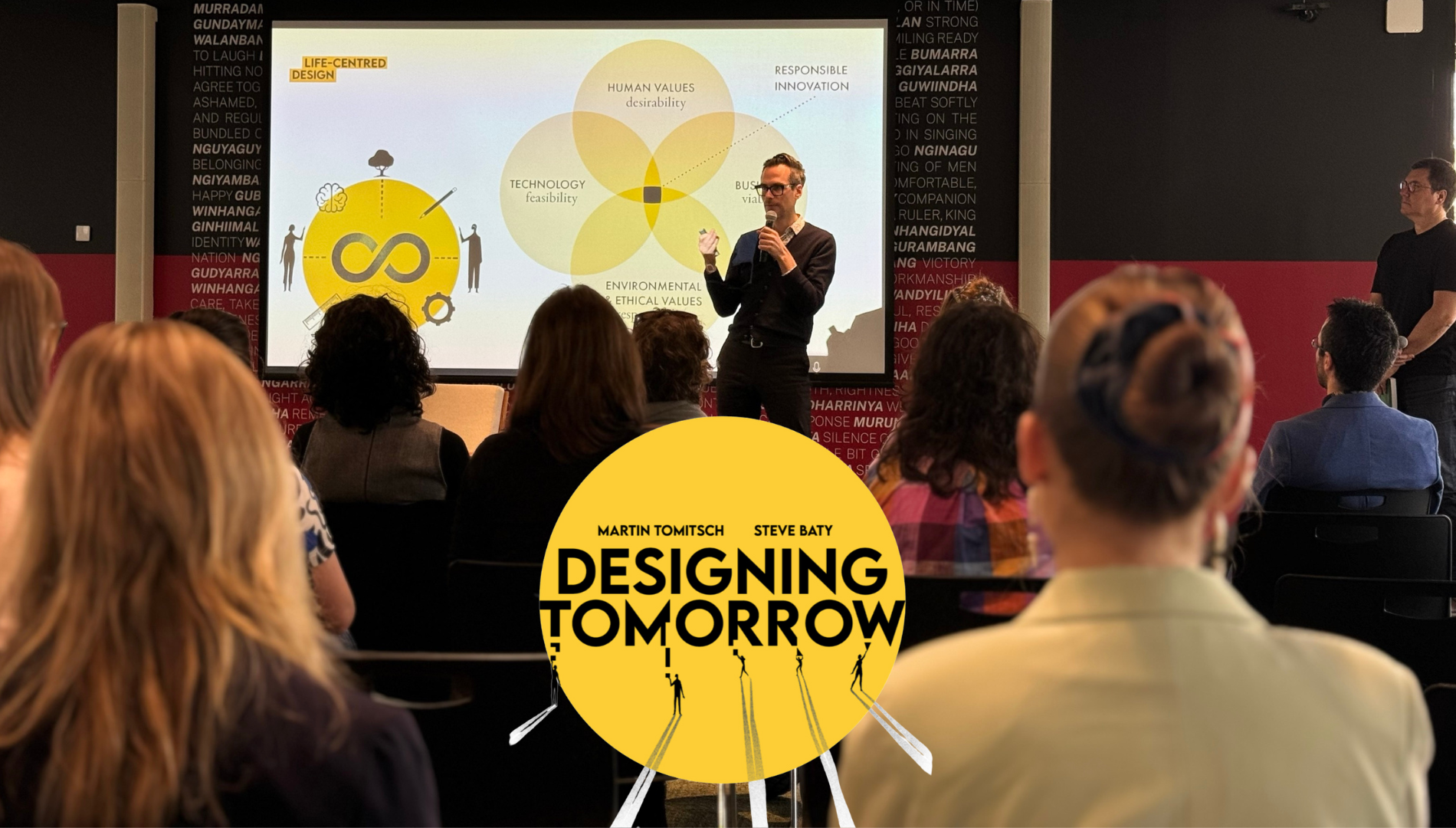This is a question we consider both frequently and carefully at the ANU School of Cybernetics.
Luckily, we’re not the only people pondering this essential question.
Strategic designer and Director Steve Baty from Meld Studios and interdisciplinary academic Professor Martin Tomitsch from the University of Technology Sydney, have been pondering this question too.
Inspired by each’s other’s experiences they wrote a book ‘Designing Tomorrow’ to give question askers, strategic designers, and positive changemakers alike practical tactics to engage with these difficult questions.
To talk about their book, they joined us in person at the School of Cybernetics, for an event co-hosted by ACM SIGCHI Chapter for Canberra, bringing together an audience of designers, cyberneticians, and coders.
Drawing on the collective knowledge in the room, Steve and Martin led a conversation about the tools, strategies, and examples offered in their book to provide helpful approaches to build more sustainable futures.
One of these concepts, ‘life-centered design’, particularly stood out to us as a helpful approach to consider the interdependent connection of our actions and technologies. Life-centered design means focusing on our responsibility, to each other, to the planet, to the future. Steve and Martin invite their audiences to see the larger systems that our designs have on not just humans, but on animals, plants, and our larger ecosystem.
Steve and Martin’s book is about providing accessible frameworks that empower readers to work on approaches that are feasible, desirable, viable AND responsible.
The type of systems-thinking we research, teach, and promote at the School of Cybernetics, is this type of thinking that Steve and Martin advocate to see more of in the world.
In retaining responsibility for products throughout their life cycle, identifying unintended consequences, and envisioning futures, we can create a better tomorrow, today.
Feeling inspired and wanting to know more? Watch Steve and Martin’s conversation about Designing Tomorrow below:

